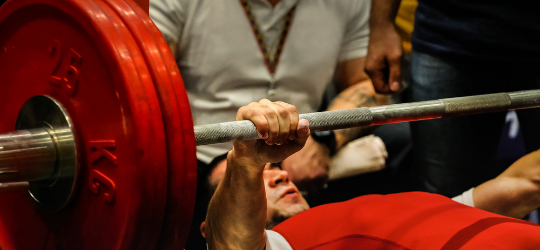The best way to think of the cardiovascular system is that it’s the body’s aerobic engine. Its job is primarily to pump blood and deliver oxygen throughout your entire body. Without it, you wouldn’t be alive.
At the center of this engine is the heart itself.
Although the heart is composed of a slightly different type of muscle tissue than that of your skeletal muscles, it’s still a muscle nonetheless and capable of becoming bigger, stronger, and more efficient.
In many ways, it’s the most important muscle in your body when it comes to improving fitness, health, performance, and everything in between.
Just as with other muscles, the type of training that you do dictates the changes that happen within the heart as a result. The heart of a marathon runner looks and performs very differently than the heart of a powerlifter.

The marathon runner’s heart has to be capable of delivering a lot of blood with each beat. It has to be extremely efficient.
The heart of a powerlifter, on the other hand, has to be able to support the tremendously high blood pressures, up to 345/245, and force on the body during maximum lifting.
This requires the walls and tissues of the heart to be strong. Efficiency is much less important when you’re training for heavy lifts that only last a few seconds.
How red power intervals work
The reason all this is important to understand is because red max intervals are specifically designed to cause changes in the heart that can up the horsepower of your entire cardiovascular system.
This horsepower is typically measured in terms of how much oxygen your body can use during high level exercise. This number is known as your VO2 max and it’s a very good gauge of your overall aerobic fitness.
The primary goal of red max intervals is to help train the heart to be able to deliver more oxygen by driving it towards the highest intensities. This is where it’s forced to work the hardest, sort of like the equivalent of pushing your heart to its 1-rep max.
By pushing the heart up to the limits of its oxygen pumping potential, it causes changes that improve VO2 max and overall aerobic fitness. The result is that you develop a stronger heart that can power a bigger aerobic engine.

How to do red max intervals
Let me start by saying that red max intervals are not fun. They are extremely demanding because the single most important thing you have to do is drive your heart rate up to its max, or as close to it as you can get it.
You also don’t want to hit your max and then immediately slow back down. The goal is to keep it up towards the top for up to 30 seconds, or more, to really drive the maximum results from this type of interval.
Before you do this, there are two important considerations:
- Red max intervals are not for beginners. Just as it’s not a good idea to take someone that’s new to lifting weights or coming off a long layoff and start by doing heavy 1-rep max sets, the same applies to heart rate training.
You should not include red max intervals in your program until you already have a relatively high level of aerobic fitness. This generally means an HRV in the 80’s and a resting heart rate in the low to mid 50’s. - Exercise selection is extremely important. To get up to your max heart rate means only total body exercises will work. Exercises that are seated like rowing or biking will not be as effective because you will not be able to get your heart rate as well.
It’s also important to avoid trying to incorporate heavy strength-based exercises or circuit training. These may drive heart rate up, but they will also drive blood pressure much higher as well and this can change the impact on the heart as well.
Each rep of red max intervals should be somewhere between 90-120s depending on how long it takes you to get your heart rate to max, or close to it. Your goal should be to hit the top of the red zone and keep it there for up to 30 seconds or more.
Rest periods should be 4-5 minutes, or until you feel fully ready to drive your heart rate up to max again.
Active rest around the middle of the blue zone is more effective than passive rest, though you may feel the need to sit down or take a complete break for the first minute or two.

It goes without saying that you should be thoroughly warmed up before you do your first rep. It’s incredibly important to focus on maintaining good technique, even as you start to become fatigued.
How to incorporate red max intervals into your program
This type of high intensity training is best reserved for short periods of time, only a few weeks at most. They are particularly effective when peaking for a competition that requires a high level of aerobic fitness.
When you’re first starting out, as little as 1-2 reps is all that’s necessary. As you progress, work up to 3-4 reps per workout. Because the intensity is so high, there is generally no need or benefit to doing higher reps than that.
As with other high intensity methods, red max intervals should be incorporated into your program a maximum of 1-2 times per week, with at least 2 days between them.
When these guidelines are followed, they may not be fun, but they are an incredibly powerful way to increase the horsepower of your aerobic engine and boost your performance in a short period of time.
